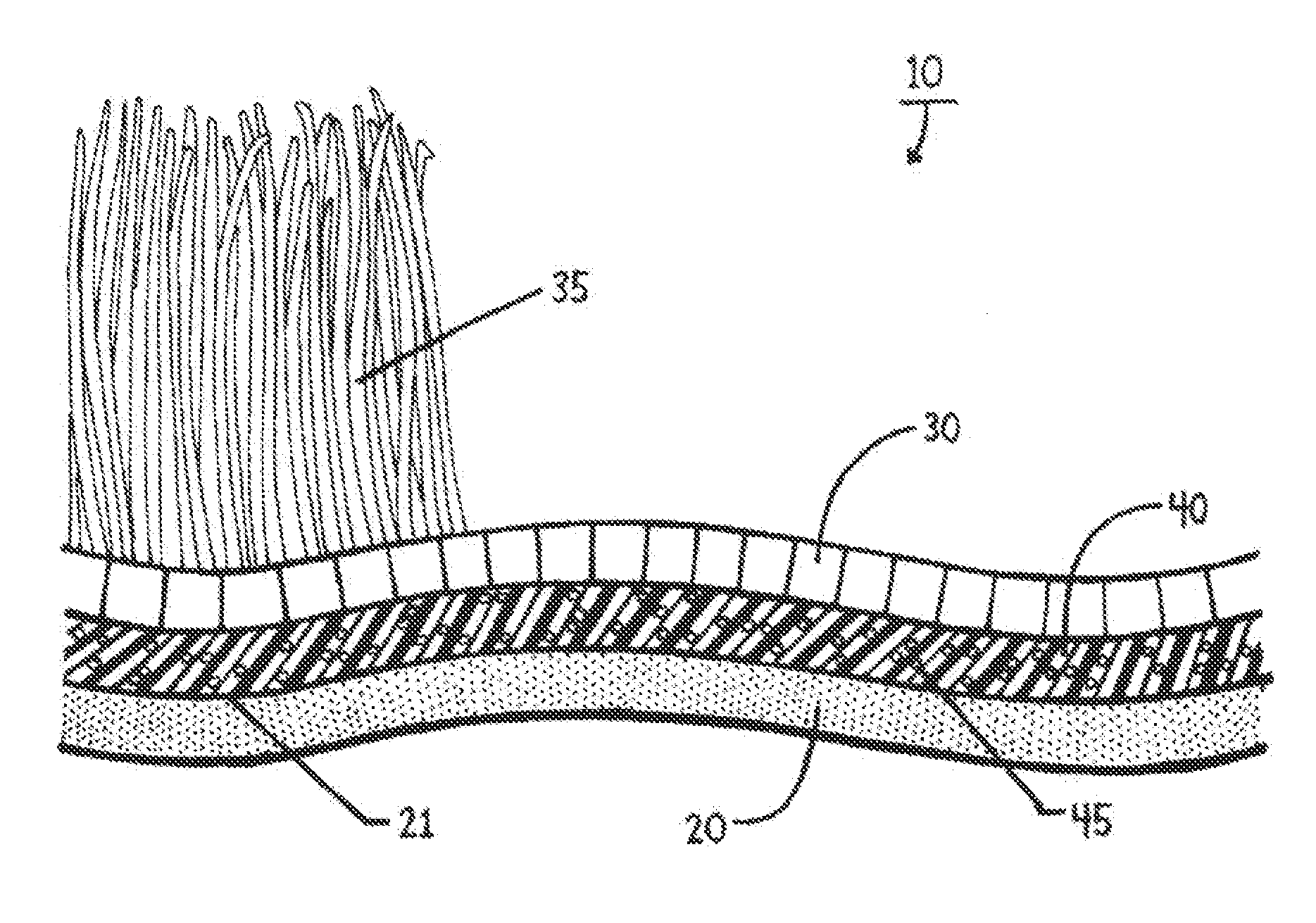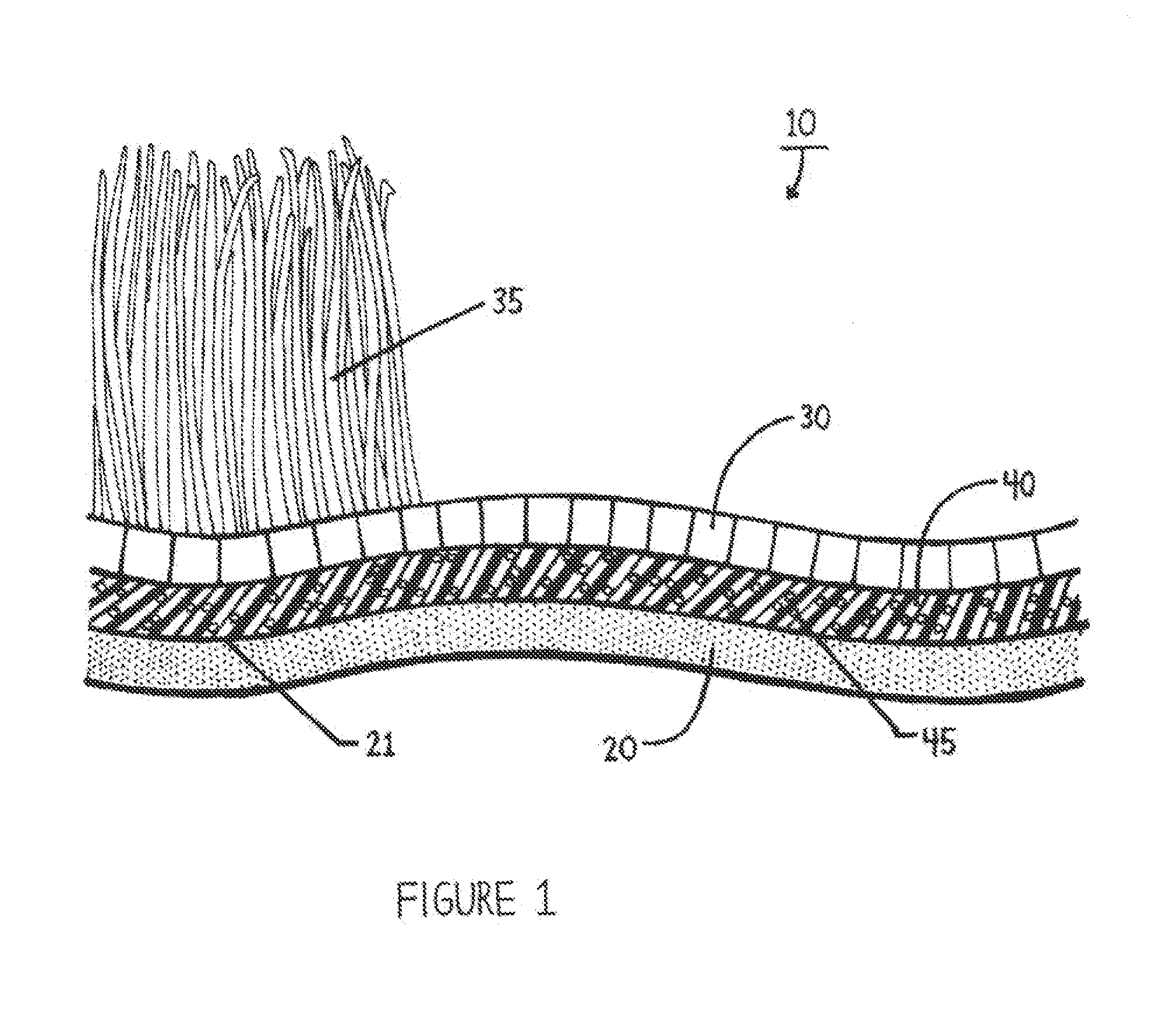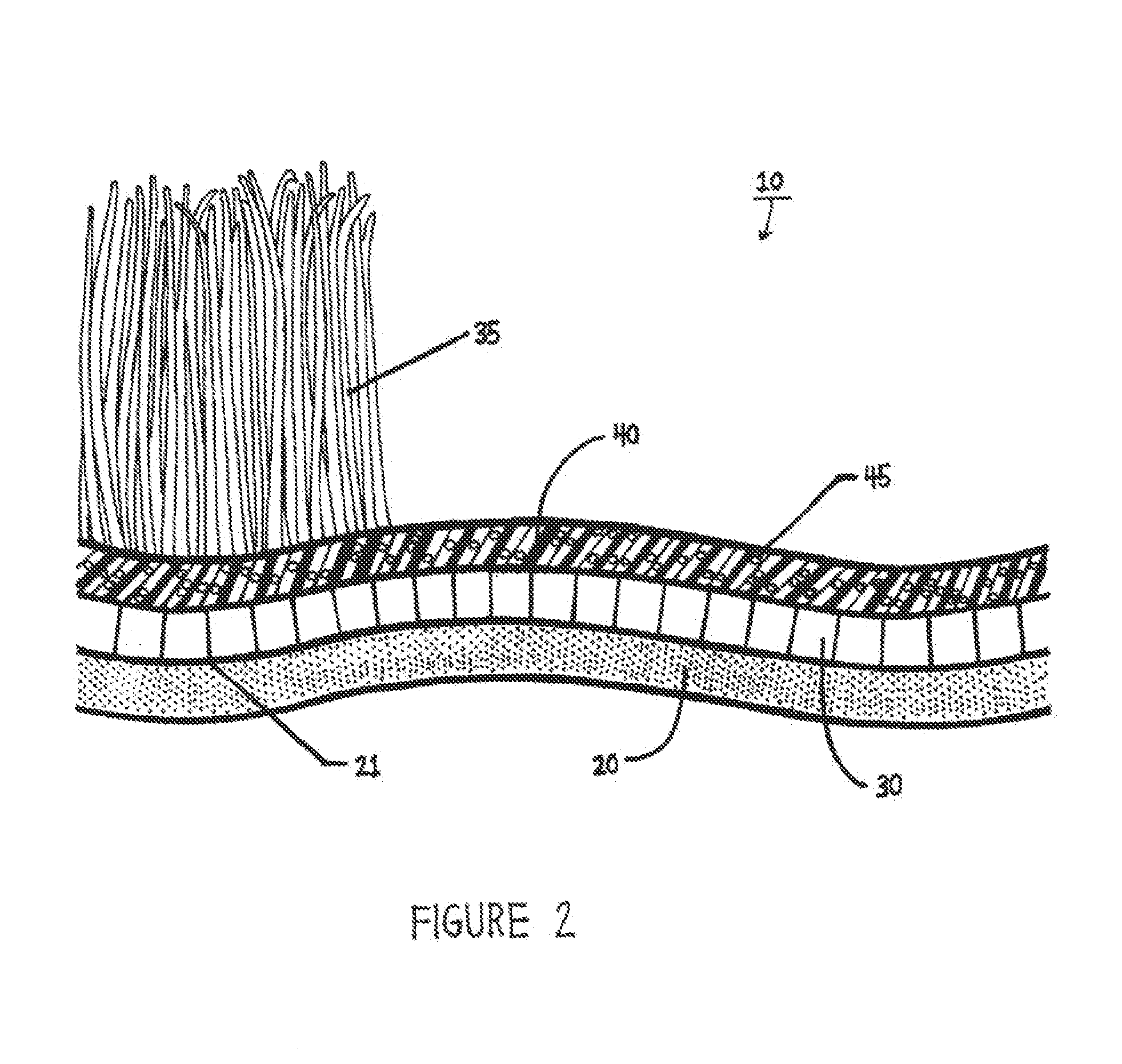Synthetic turf having cooling layer
a technology of synthetic turf and cooling layer, which is applied in the direction of ground paving, single unit paving, and ways, etc., can solve the problems of high cost and time of maintaining natural grass, natural grass may have problems growing in certain environmental and man-made conditions, and inadequate footing
- Summary
- Abstract
- Description
- Claims
- Application Information
AI Technical Summary
Benefits of technology
Problems solved by technology
Method used
Image
Examples
Embodiment Construction
[0043]Before describing the present invention in detail, it is to be understood that this invention is not limited to particularly exemplified systems or process parameters as such may, of course, vary. It is also to be understood that the terminology used herein is for the purpose of describing particular embodiments of the invention only, and is not intended to limit the scope of the invention in any manner.
[0044]All publications, patents and patent applications cited herein, whether supra or infra, are hereby incorporated by reference in their entirety to the same extent as if each individual publication, patent or patent application was specifically and individually indicated as incorporated by reference.
[0045]It must be noted that, as used in this specification and the appended claims, the singular forms “a,”“an” and “the” include plural referents unless the content clearly dictates otherwise. Thus, for example, reference to a “colorant agent” includes two or more such agents.
[...
PUM
| Property | Measurement | Unit |
|---|---|---|
| Fraction | aaaaa | aaaaa |
| Fraction | aaaaa | aaaaa |
| Fraction | aaaaa | aaaaa |
Abstract
Description
Claims
Application Information
 Login to View More
Login to View More - R&D
- Intellectual Property
- Life Sciences
- Materials
- Tech Scout
- Unparalleled Data Quality
- Higher Quality Content
- 60% Fewer Hallucinations
Browse by: Latest US Patents, China's latest patents, Technical Efficacy Thesaurus, Application Domain, Technology Topic, Popular Technical Reports.
© 2025 PatSnap. All rights reserved.Legal|Privacy policy|Modern Slavery Act Transparency Statement|Sitemap|About US| Contact US: help@patsnap.com



